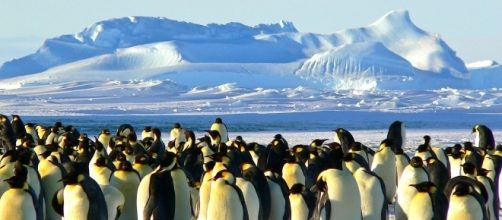The NSIDC announced Antarctica’s Sea Ice loss was the greatest it’s been since 1978 (when tracking began) despite a long-term trend showing the continent gaining in size. The sea ice, which shrinks every summer, contracted 883,015 square miles. The previous low was 884,173 square miles in 1997. That’s a difference of 0.1 percent or 1,158 square miles.
And predictably, the head of NSIDC (U.S. National Snow and Ice Data Center), Mark Serreze, used the 0.1 percent change and asserted less summer sea ice is Antarctica’s reaction to a warming world, despite having grown in size by 33 percent since 1978 and covered almost entirely by snow.
And Serreze said this record-breaking sea ice loss was making it “harder to deny” the “impact of climate change on planet Earth.”
Antarctic Sea Ice Claims Don’t Stand Up To Scrutiny https://t.co/nShqZCFZmA
— Craig M 450 PPM 😜 (@CraigM350) February 23, 2017
Antarctica’s weather
So, what’s happening in Antarctica? According to Paul Homewood, the simple answer was weather. Changing wind patterns, Homewood wrote on his site, caused by the Southern Annular Mode flipping negative allowed winds to penetrate from the north. That elevated temperatures while “pushing sea ice towards the coast.” Another issue was the accuracy of the satellites, also called the margin of error.
NSIDC admits on its site that calculating sea ice loss, especially in summer, can be difficult with large discrepancies.
That’s because satellites have trouble distinguishing between melt ponds and ice, leading to a margin of error of plus or minus 15 percent. Accuracy is highest when the ice pack is thick and concentrated. It decreased when thin ice increased.
Natural geological heat flow causing West Antarctic glacial ice melting—not global warming https://t.co/nYT4EP5MOH
— Tom Nelson (@tan123) December 2, 2016
Pine Island Glacier
Another area of ‘concern’ was the Pine Island Glacier, which broke off a chunk recently. In earlier reports, researchers said continental winds were pushing warm sea water beneath West Antarctica’s Pine Island Glacier, causing it to calve. Now they're blaming the local weather conditions.
What atmospherically biased scientists have refused to acknowledge is that Pine Island Glacier sits atop an active 5,000-mile-long heat-emitting fault.
James Kamis, a geologist who has studied how geology affects the climate, recently wrote that rift zones were allowing magma to flow up and feed at least 61 active volcanoes, including many adjacent to the Pine Island Glacier. Kamis said the bottom melting of West Antarctica glaciers can be directly linked to geothermally heated seawater from the rift zone.
Interestingly, 2015 summer sea ice loss was far below average and has been decreasing since tracking began. An outlier year like 2016 is an anomaly, not a trend. Despite the alarmist rhetoric about mankind’s fingerprints on West Antarctica’s recent calving, its active geology and unique weather have been much more influential.

